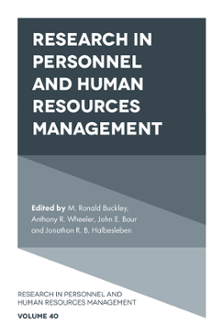
Index
Research in Personnel and Human Resources Management
ISBN: 978-1-80455-046-5, eISBN: 978-1-80455-045-8
ISSN: 0742-7301
Publication date: 4 October 2022
Citation
(2022), "Index", Buckley, M.R., Wheeler, A.R., Baur, J.E. and Halbesleben, J.R.B. (Ed.) Research in Personnel and Human Resources Management (Research in Personnel and Human Resources Management, Vol. 40), Emerald Publishing Limited, Leeds, pp. 273-281. https://doi.org/10.1108/S0742-730120220000040009
Publisher
:Emerald Publishing Limited
Copyright © 2022 M. Ronald Buckley, Anthony R. Wheeler, John E. Baur and Jonathon R. B. Halbesleben
INDEX
- Prelims
- Chapter 1: Unlocking the Potential of Other-ratings for Human Resource Management Research
- Chapter 2: The Human Resource Ecosystem: Reconciling Alignment and Disruption
- Chapter 3: Reconstructing Constructive Deviance: The Development of a Positive Employee Model for Human Resource Management
- Chapter 4: Beyond Productivity: Incentive Effects on Alternative Outcomes
- Chapter 5: The Data Are Coming! Reconceptualizing Big Data for the Organizational Sciences
- Chapter 6: The “Why” and “How” of Human Resource (HR) Practices: A Critical Review of the Antecedents and Consequences of Employee HR Attributions Research
- Chapter 7: Building Thriving Workforces from the Top Down: A Call and Research Agenda for Organizations to Proactively Support Employee Well-Being
- Index